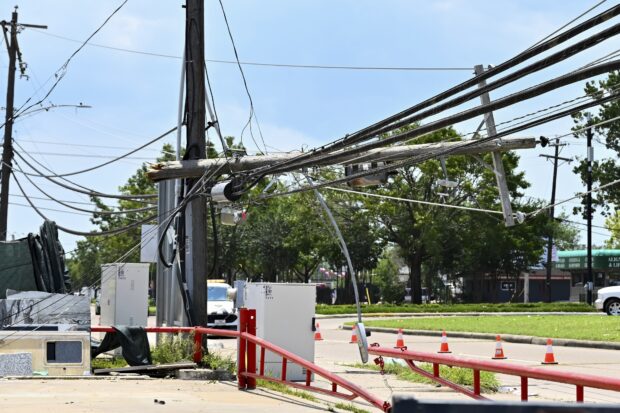Destructive storms like Hurricane Beryl that knocked out power to 3 million homes and businesses in Texas are growing more frequent and intense, and insurers are jacking up rates in response.
That could mean big profits for property and casualty insurers like Allstate and Progressive in the coming year. Investors have bid up shares in the sector roughly 19 percent so far this year, outpacing the S&P 500’s 17 percent gain. Global insurance giant Swiss RE expects the broader sector’s return on equity, a key measure of profit, to grow 9.5 percent in 2024, well above last year’s 3.4 percent growth.
Rate hikes have been a way for property insurers to offset the cost of catastrophic events. Hurricanes account for most insured catastrophe losses, according to CFRA. Hurricane Ian in 2022 is a reminder of the risks facing insurers. It was among the costliest storms in U.S. history at just over $118 billion, according to NOAA. Hurricane Katrina in 2005 was the costliest at about $200 billion.
Effective rates for homeowner insurance surged by double digits for most insurance companies in 2023, according to S&P Global. Progressive’s rates rose 10.4% in 2023, compared with just a 2.9 percent rise in 2022. Allstate’s rates jumped 10.2%, up from 4.3 percent in 2022.
The U.S. experienced 28 separate billion-dollar weather and climate disasters in 2023, the most ever, according to the National Oceanic and Atmospheric Administration. That surpassed 22 such events in 2020.
The current hurricane season is already one for the record books early on. Hurricane Beryl, the second named storm of the season, became the earliest storm to develop into a Category 5 hurricane in the Atlantic. NOAA is forecasting an above normal season with up to 25 named storms, up from 20 named storms and 7 hurricanes in 2023.
“If this grim forecast comes to fruition, it will likely buoy pricing for many lines of property/casualty insurance and reinsurance, providing certain underwriters’ shares with a catalyst,” according to a research report from CFRA.
Insurers are also reducing their exposure to outsized losses by cutting their business in Florida and in California, where wildfire risks loom every year. Farmers Insurance pulled out of the Florida market in 2023. State Farm is scaling back coverage in California.
The industry has been raising premiums for about six years now, CFRA said. Cumulative rate increases over the years have compounded pressure on homeowners. Premiums for property and casualty insurance are now at their highest levels in more than two decades, according to the U.S. government data from the producer price index.
As a result, Wall Street expects Progressive’s earnings to nearly double in 2024 after jumping by 50 percent in 2023.
“We got ahead of the curve as far as pricing.” said Progressive CEO Tricia Griffith, during a May conference following its first quarter report. “We’re seeing that with our growth and hope to continue to see that.”
Analysts expect Travelers to report a 36 percent jump in 2024 earnings per share following a modest gain in 2023. Allstate’s profit is expected to skyrocket compared to weak growth in 2023 as it moves past the big cost impact from Hurricane Ian.





















 Keeping Humanity Alive in Tech-Forward Insurance Teams
Keeping Humanity Alive in Tech-Forward Insurance Teams  No Escape From Tariffs — Not Even for D&O Liability Insurers
No Escape From Tariffs — Not Even for D&O Liability Insurers  The Future of the Insurance Customer Experience Is Unity, Personalization
The Future of the Insurance Customer Experience Is Unity, Personalization  1 in 6 Americans Report Feeling Stressed Every Day
1 in 6 Americans Report Feeling Stressed Every Day 